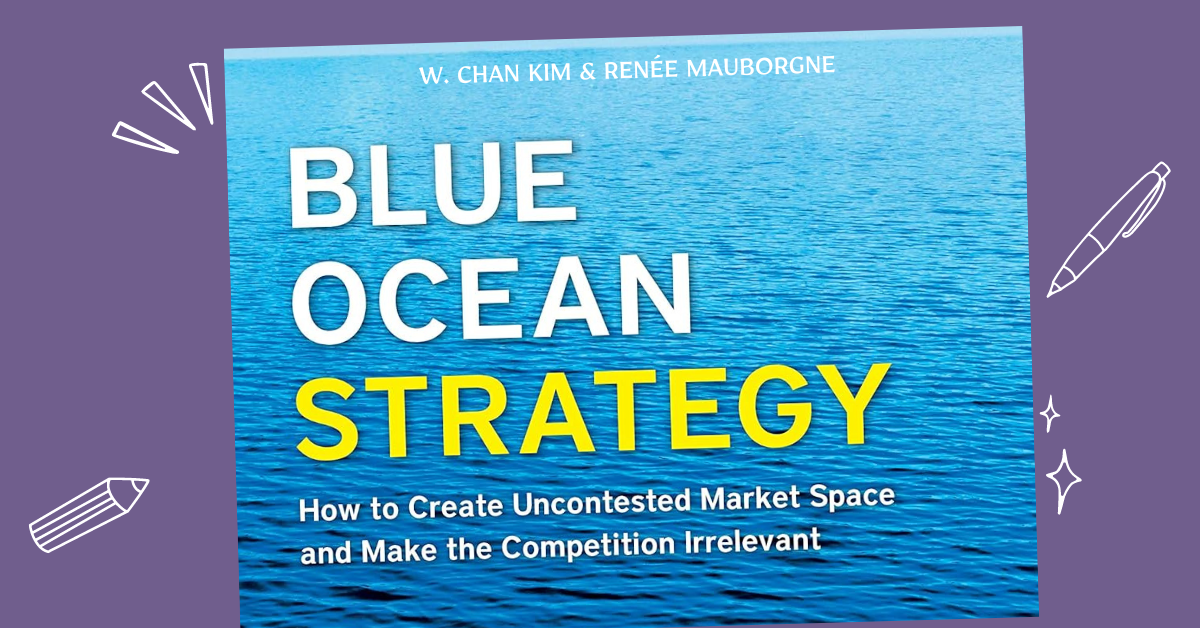Blue Ocean Strategy, a classic in business strategy, is often considered essential reading for individuals and organizations ranging from startups to long-established companies. This book tackles the age-old question:
“How can you create a market space and make the competition irrelevant?”
To date, the book has been reprinted 12 times and continuously updated with real-world applications from various industries, demonstrating the effectiveness and relevance of the Blue Ocean Strategy.
What is the Blue Ocean Strategy?
To understand the Blue Ocean Strategy, we first need to grasp the concept of the Red Ocean. The Red Ocean represents traditional markets where companies fiercely compete on the same value curve, striving to outperform each other and secure a competitive edge. This often results in a crowded market where profits and growth opportunities are limited.
In stark contrast, the Blue Ocean Strategy suggests that companies can succeed without direct competition by creating new market spaces that meet two key conditions: (1) Differentiating their value proposition significantly, and (2) Achieving cost efficiency while still providing desired profitability. Essentially, the strategy aims to break the trade-off between value and cost, fulfilling both conditions simultaneously.
Implementing the Blue Ocean Strategy
The challenge of creating a Blue Ocean is undeniably daunting. However, the authors provide a systematic and detailed approach to guide readers from strategy formulation to execution. The book is divided into three key parts:
Understanding Blue Ocean Strategy: The authors illustrate their concepts with concrete examples from various industries. For instance, Cirque du Soleil achieved in 20 years what took traditional circuses over 100 years, and Casella Wines revolutionized the saturated wine market in the US by creating a new beverage category that outsold traditional wines by three times.
Formulating Blue Ocean Strategy: This section introduces step-by-step tools and frameworks, such as the strategy canvas, the four actions framework (eliminate-reduce-raise-create), and the six paths framework to reconstruct market boundaries. These tools help businesses identify opportunities for creating a Blue Ocean.
Executing Blue Ocean Strategy: Perhaps the most valuable part of the book, this section focuses on the execution of the strategy. It emphasizes the importance of aligning the organization’s activities with its strategic vision and offers practical advice on overcoming hurdles to successful implementation. This is crucial for companies attempting such a significant strategic shift.
Conclusion
Blue Ocean Strategy is a treasure trove of strategic insights, requiring readers to deeply contemplate and analyze its concepts to apply them successfully in the real world. The book’s comprehensive approach from strategy formulation to execution makes it a must-read for anyone looking to break free from the competitive Red Ocean and thrive in an uncontested market space.
By adopting the Blue Ocean Strategy, businesses can unlock new opportunities and achieve sustainable growth. Happy reading, and may you find immense value in this strategic guide.

